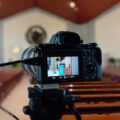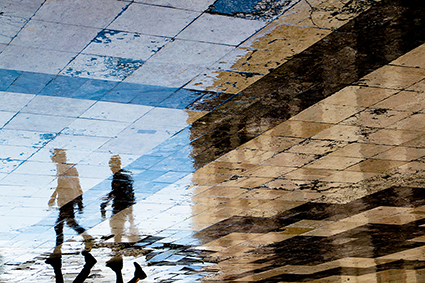From churches to streets and malls: Religion in the city
From churches to streets and malls: Religion in the city
Urbanisation affects religions around the world. How does the Evangelical Lutheran Church respond to urban change in the capital city of Finland?
Urbanisation and the church in Finland
Urbanisation is a global megatrend that affects our life in private and public domains. It transforms the built environment as people move and migrate into cities.[1] It also influences our culture, behaviour, lifestyle, and even religiosity. During the last decades, the Western world has become more secular and plural in terms of religion, especially in cities.
In this article, we delve into religion in the city by discovering what kind of new policies and practices the church has developed in the midst of urbanisation. We concentrate on Finland, which is a good example of the changed religiosity and the decline of membership in the ‘national church’: the Evangelical Lutheran Church of Finland.[2] In Finland, illustratively, church membership is lowest in the capital city of Helsinki which is also the most urbanised area in the country.[3] Through a few exemplary cases, this article finds out how the Evangelical Lutheran Church in Finland has responded to the changes related to or caused by urbanisation, especially in the city of Helsinki, where most of those religious innovations are launched.
Streets and malls as the new church
One of the most distinctive features of the Helsinki parish union is the decreasing amount of tax revenues because of the decreasing church membership.[4] As a result, the parish union has had to sell its properties.[5] Not only because of that, but also because the church as a building is perceived as foreign to many urban dwellers, the Kallio parish in Helsinki launched a project entitled ‘A parish without walls’.[6] Instead of building a new church or a chapel in the rapidly growing part of the city, the Kallio parish decided to meet local people on the streets and at the local mall. By relocating from the church to the streets and the mall, the parish seeks to support urban people in new ways and to enhance community spirit often missing in the city.[7]
Beers with the vicar and Latino moves in the liturgy
Another example of the renewed practices, and perhaps theological thinking, is the ‘beers with the vicar’ concept employed in the Paavali parish in Helsinki. The vicar of the Paavali parish has been calling people after Sunday service to have beers with him in the pub nearby. The vicar argues that many people in the city are more likely to consider visiting a vicar for a drink in the pub than they are to attend church.[8]
Another example from the same parish is the recent Sunday service that aroused debate in the media as there was Latino dance involved.[9] At the first advent, the service started with a samba dance with dancers dressed in traditional samba clothes. This caused a division of opinions. Some people considered it fun and a display of multiculturalism, whereas others saw it as inappropriate and even derogative.[10] The vicar of the parish justified the dance by arguing that it lowers the threshold to the church.[11] Lowering the threshold is relevant in the city, where especially the young people consider the church to be alien.[12]
Walk-in-therapy and baptism days
In the urban environment, the church is also participating in producing welfare services. One of the new practices in the city is the ‘walk-in-therapy’ offered by the Helsinki parish union for young adults to support their mental wellbeing.[13] It is a well-known fact that mental illness of the youth is a serious and even increasing problem in Finland, especially in cities such as Helsinki.[14] [15] To tackle social exclusion of the youth, the walk-in-therapy is offered free of charge, anonymously, and without an appointment.[16]
One of the illustrative examples of the changed religiosity in Finland is the fact that people are increasingly choosing not to baptise their children, especially within cities.[17] In response, the Roihuvuori parish in Helsinki has developed a concept called ‘baptism day’. To reduce the stress of holding a party, the parish offers baptism to families on the church premises as a mass event on baptism days.[18] [19] The Kallio and Paavali parishes have gone even further with their application of baptism days, as they also offer baptisms at the mall where infants are welcomed to the baptism with a low threshold.[20]
Religion in the city
As shown in this article, the church is seeking new habits and developing new traditions in the city in response to urbanisation and its side effects. Some of these new practices and reforms are welcomed with open arms and some have drawn more opposition. Nonetheless, the Church in Finland is seeking its identity in the urbanising environment. It may employ marketing tactics when developing new practices,[21] but it also aims to stay authentic to its vision and calling: to love your neighbour even when the neighbour is foreign, numerous, and alien, as they often are in the city.
Our team of analysts conducts research on topics relating to religion and society. Find out their relationships on the EARS Dashboard.
Sources
[1] The World Urbanization Prospects
[2] Enää alle puolet helsinkiläisistä ja vantaalaisista kuuluu kirkkoon – Espoossa evankelis-luterilaisen kirkon jäseniä on vielä yli puolet väestöstä
[3] Alueelliset erot näkyvät kirkon jäsenyydessä
[4] Tässä on kirkon 4,8 miljoonan euron säästölista Helsingissä: nämä rakennukset myydään ensimmäisenä, moni menettää työpaikan
[5] Ibid.
[6] Kasvavaan Kalasatamaan rakentuu seurakunta, jossa ei ole seiniä
[7] Ibid.
[8] Kirkkoherra houkuttelee saarnan jälkeen kapakkaan – pyytää seurakuntaa kaljalle Helsingissä
[9] Samba Paavalinkirkon jumalanpalveluksessa suivaannutti ja ihastutti – sambaryhmän johtaja yllättyi kommenttien ärhäkkyydestä ja vääristä oletuksista
[10] Piispa Jari Jolkkonen sambakohusta: Kenenkään ei pidä epäillä Kari Kanalan vilpittömyyttä
[11] Hoosiannaa sambattiin Paavalinkirkossa Helsingissä – kirkkoherra Kari Kanala: Meidän ”firman” laatulupaus on Tervetuloa
[12] See Mikkola S. & Saarelainen S. (2023). Millenniaalien kirkko. Kulttuuriset muutokset ja kristillinen usko. Kirkon tutkimus ja koulutus.
[13] Kirkon walk in -terapia auttaa nuoria ilman ajanvarausta
[14] Nuorten pahoinvointi on Suomessa jo kriisi – “Liian moni tarvitsee apua juuri nyt”
[15] Nuorten pahoinvointi syvenee ja väkivallanteot raaistuvat, mikä avuksi? Ylen chatissa asiantuntijat vastasivat lukijoiden kysymyksiin
[16] Kirkon walk in -terapia auttaa nuoria ilman ajanvarausta
[17] Luterilainen ja ortodoksinen kirkko nostivat yhdessä esiin kasteiden kolminkertaisen kriisin
[18] Kastepäivä merenrantahuvilassa Laajasalossa mahdollistaa vaivattomat ristiäiset vauvalle tai isommallekin lapselle
[19] See our previous article on this topic: Marketing baptisms in secularising Europe
[20] Jäivätkö ristiäiset pitämättä koronan tai väsymyksen vuoksi? Pyry Paananen kastaa lapsia kauppakeskuksessa marraskuussa
[21] Kirkon kampanjat kertovat enemmän kirkosta kuin uskosta ja korostavat kirkon roolia yhteiskunnassa, sanoo tutkija Laura Kokkonen






